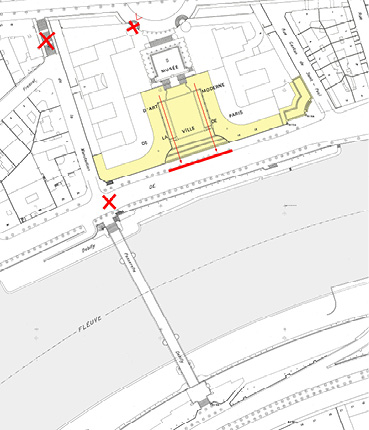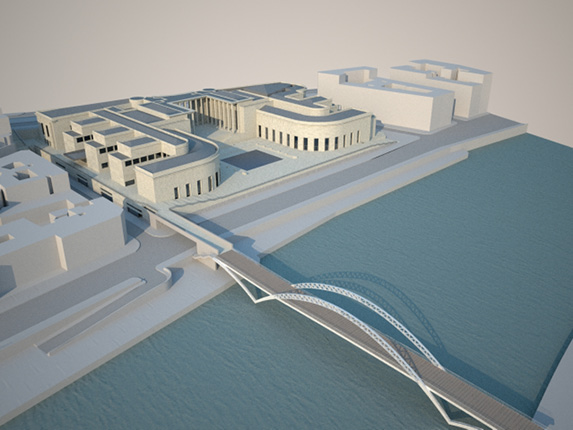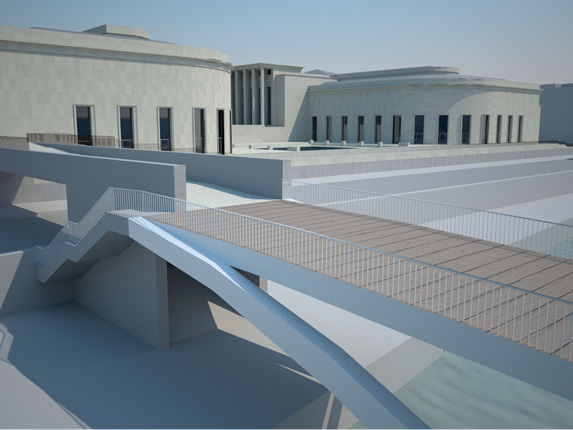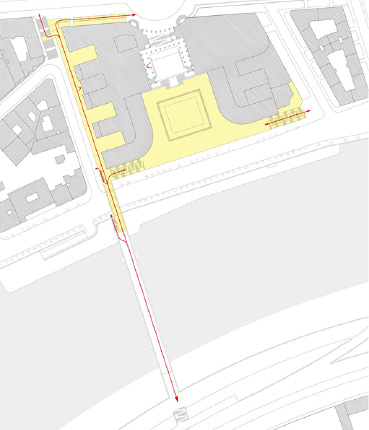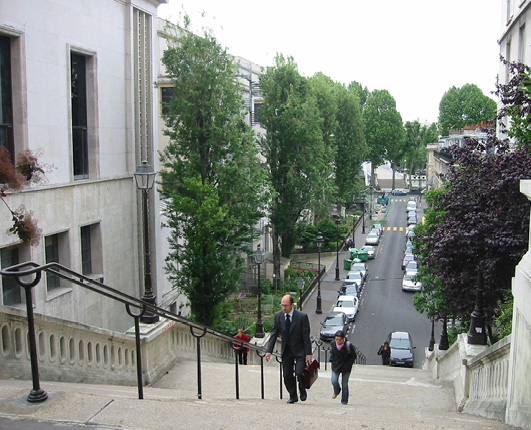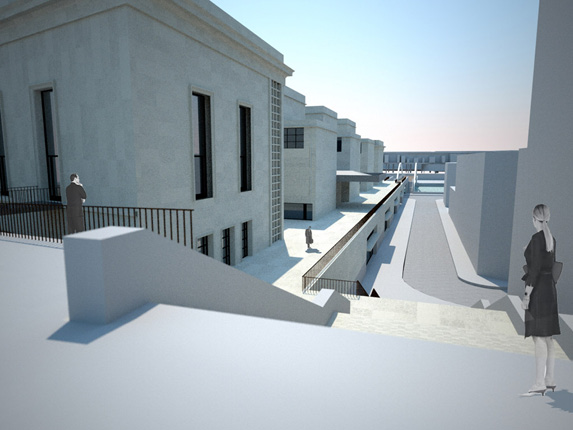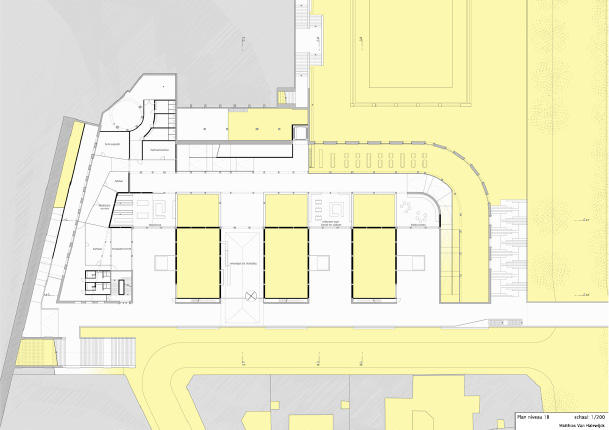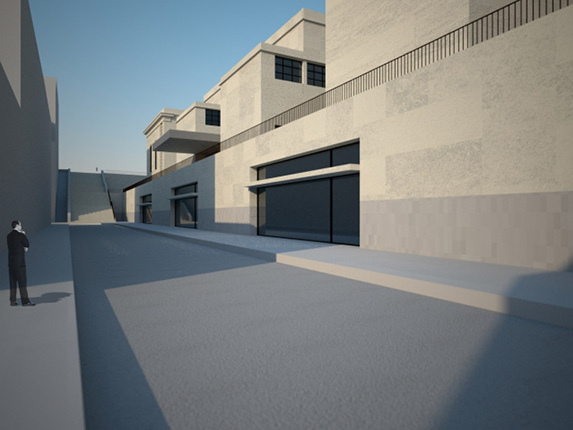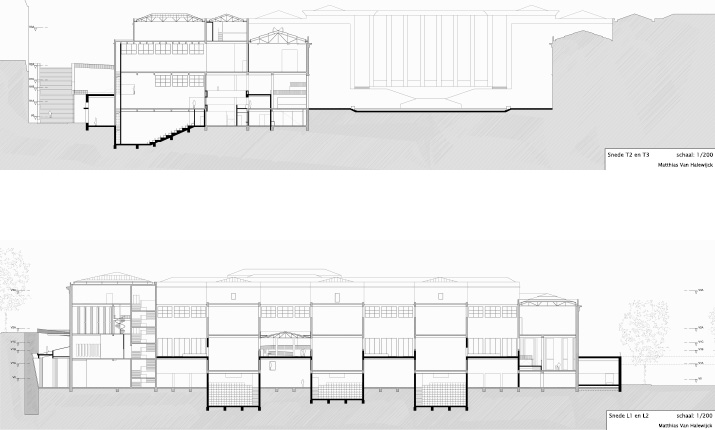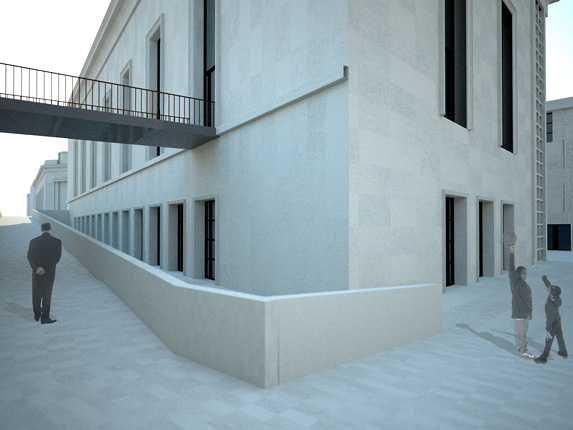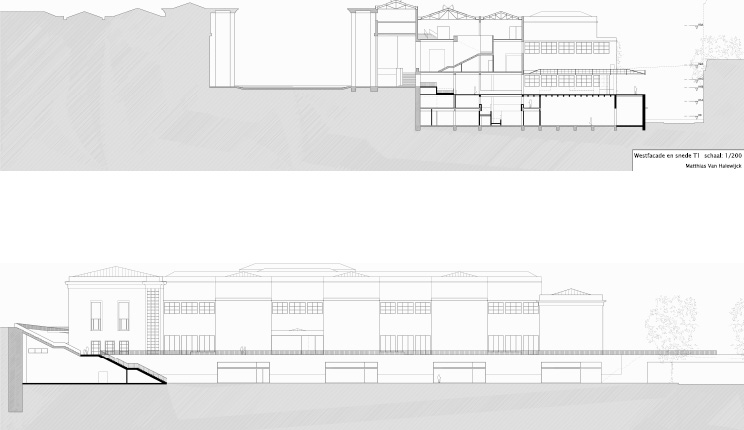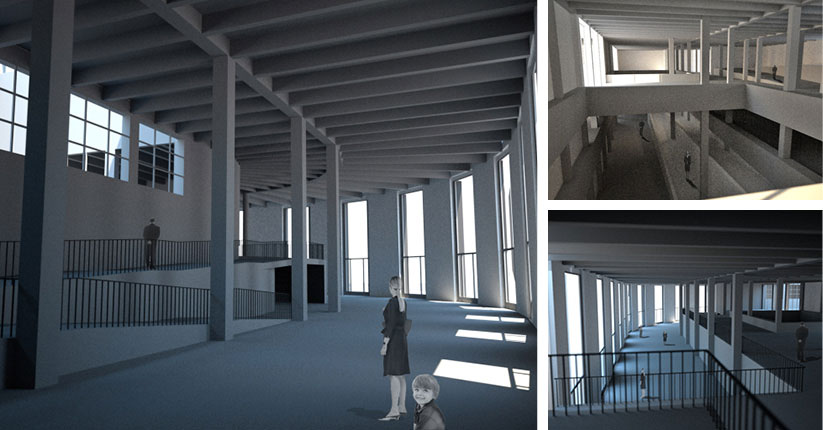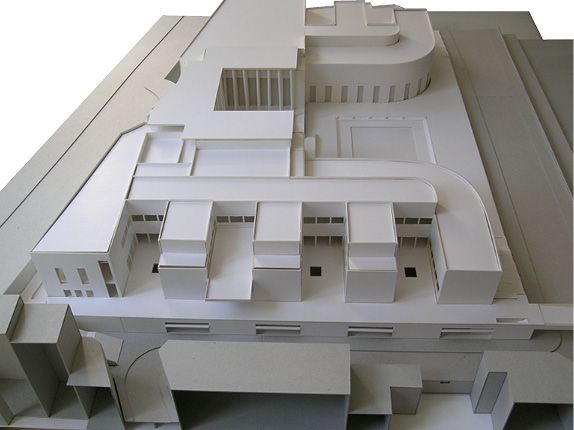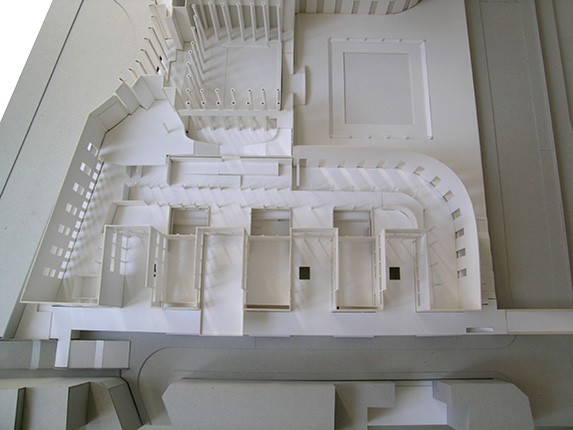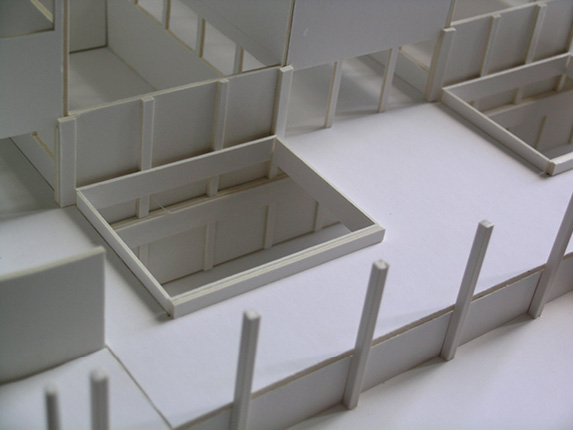Palais de Tokyo
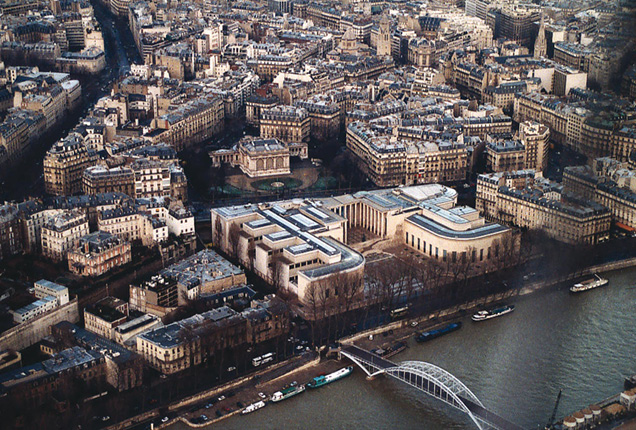
Location: Avenue du Président Wilson, Paris, France
Client: Schindler Award 2006
Stage: competition
Date: 2006
The Schindler Award
For their 2e architectural competition, Schindler opted for a site with a double focus. On an large scale a urban link is realized connecting the areas separated by the Seine and several height differences. The renovation of Palais de Tokyo, as “Site for Contemporary Creation” forms the focal point of the architectural intervention with the main theme being “Accessibility For All”, interpreted in the broadest way.
The Link
The present connection between the banks and by extension the museum and its environment is cut up by several physical and psychological barriers. As a result the different urban elements function as isolated fragments and the coherence in the urban fabric is absent.
The core of the project is to regenerate the coherence between the artifacts of which the city is build and that make up the urban image of our collective memory. “The Link” proposes a urban circulation uninterrupted by the interference of fragile lifts and escalators. A seamless yet differentiated promenade is interweaved with the built context en existing circulation patterns making use of the existing bridge.
The plinth of the museum building is raised and extended, and becomes the most important connector between the bridge, the old circulation, the higher avenue, the lower plaza and the edifice itself. On side of the passage, the new plinth brings the building back on the scale of the street.
Palais de Tokyo
Surprisingly, the art center that 's one of the most visited in Europe, uses only the two upper floors (36% of the total floor surface). The project foresees a vast extension of the used surface and the program, with social services, cinemas and exposition space.
A new main entrance is proposed on the side of the link connected with the restored entrance on the higher square with a new inserted repartition floor on which all public functions are organised. Together with the selective cut out of several floor parts, alternating heights are created in the spaces that would otherwise be immense and unarticulated.
Simultaneously a new void is conceived and the way light comes in is nuanced on every level. By realizing an internal circulation with ramps, the flow through the building becomes fluid and inviting.

